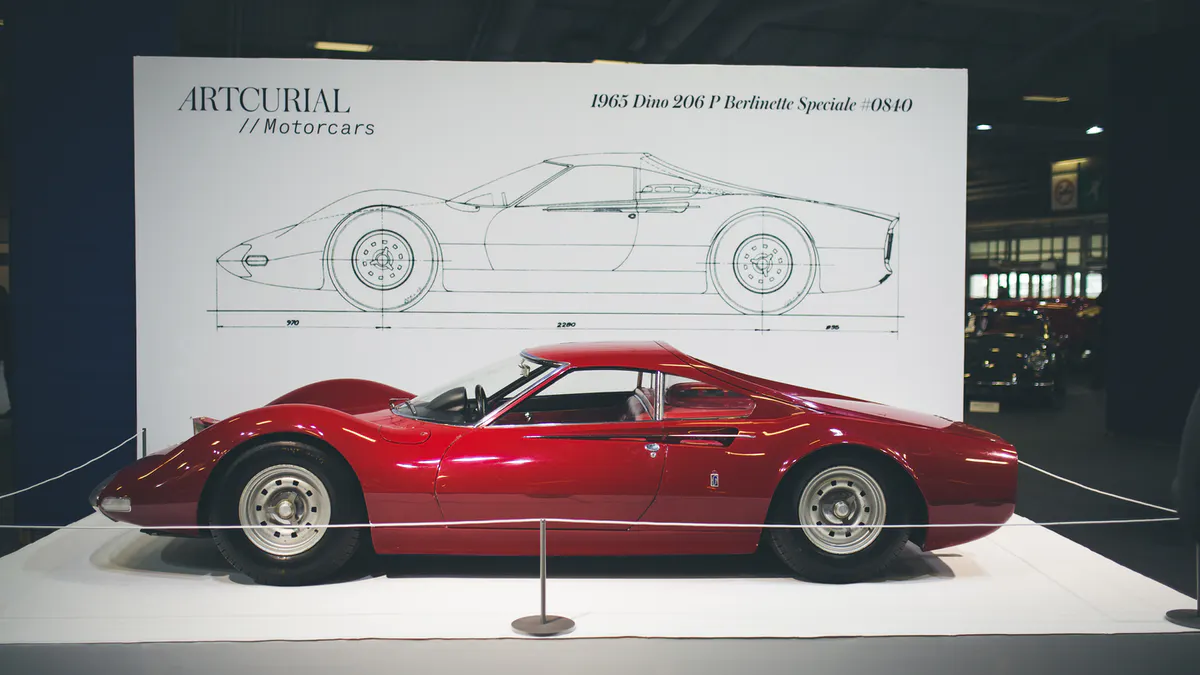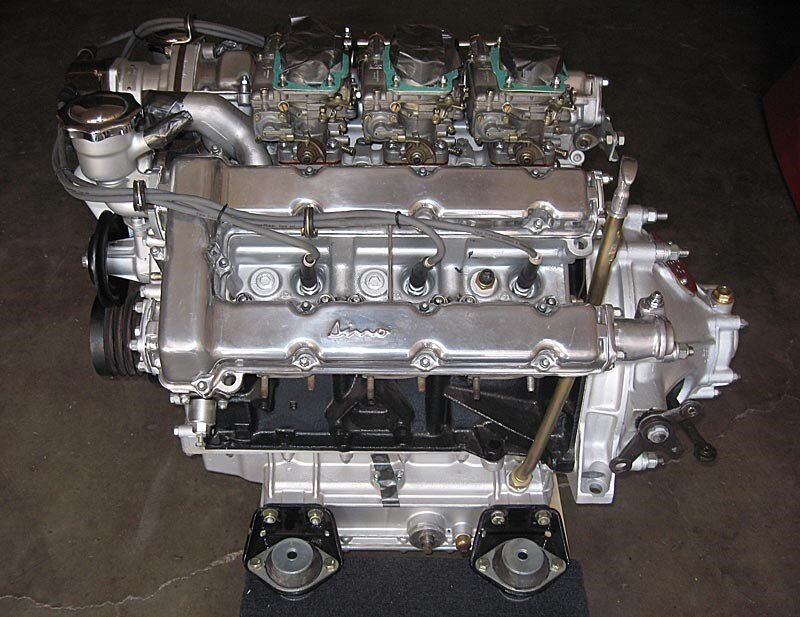The Ferrari Dino 246 GT is one of the most iconic cars ever designed.
The Ferrari Dino 246 GT first saw light at the 1965 Paris Motor Show as a prototype. It would start as a 206 GT before its transformation into the 246.
Enzo Ferrari's firstborn son, Dino Ferrari
The Dino brand honours Enzo Ferrari’s son Alfredino who had tragically died at the age of 24 in 1956 from leukemia. He was working on the Dino motor design at the time of his death and was credited with being the driving influence behind the new V6 engine which was being developed for competition purposes. Hence forth all six cylinder models were known as Dinos. Enzo idolized Dino and had big plans for his son at Ferrari’s Maranello factory, before Dino’s life was sadly cut short aged just 24.
The Ferrari Dino 246 GT features the six-cylinder engine Dino was designing prior to his death. It was the marque’s first production car to house a V6 engine, deviating from its usual V12 moniker.
Dino 246 GT six-cylinder engine.
The 246 GT was cheaper than a Porsche , more attainable and built with aspirations of dethroning Porsche in sales.
However, Ferrari's uncertainty towhether a cheaper car would diminish its lucrative Brand Image kept the 246 GT from showcasing Ferrari’s famous Prancing Horse badge. Instead, it would carry the Dino’s badge.That is perhaps the reason why this wonderful machine would spend
much of its early existence undervalued. People yearned for the Ferrari badge to them, the Ferrari Dino 246 GT was not a traditional Ferrari.
1969 Dino Ferrari 206 GT
Perceptions would change over time. Fifty years later and the errari Dino 246 GT is now deeply coveted by collectors. An encapsulating piece f art worthy of gracing any museum. Well ahead of its time, the 246 GT influenced sports car culture and inspired generations of flamboyant supercars.
Between 1967 and 1969, Ferrari produced 150 Dino 206 GTs before the model evolved into the 246 GT. While both examples are relatively identical in looks, there are fundamental differences. The 246 GT is taller with a longer wheelbase and its body is made from steel rather than alloy.
Campher brothers' immaculate 1971 Dino 246 GT
The Ferrari 246 GT has a slight bigger engine than the 206 – 2.4 litres compared to 2.0 – while a cast-iron engine block was used instead of aluminium.The 246 GT was launched at the Turin Motor Show in 1969 and would be made in far greater numbers than its predecessor.
From 1969 to 1974, Ferrari made 3,761 Dino 246 GT models across three series as well as the Targa-roof 246 GTS.With its Fioravanti-Pininfarina design and Scaglietti-built brilliance,the Dino 246 GT was a huge commercial success. It became a pioneer of affordable luxury yet still encompassed all the hallmarks of a high-performance sports car.
U.S.-specification ‘Chairs & Flares’ coupe.
Designs differed slightly depending where the model was marketed and, as production moved into the early 1970s, Ferrari began to utilize certain options on the 246 GT. Most notably, for the U.S. market, wider Campagnola wheels were offered with iconic flared wheel arches. This unique design trait coupled with
intricate Daytona-patterned seats became affectionately known as the ‘Chairs and Flares’ option.
U.S.-specification ‘Chairs & Flares’ coupe.
When Ferrari ceased producing the Dino 246 GT in the mid 1970s, demand for the car remained high. It didn’t go unnoticed. As the Italian giants began to move away from the salubrious curves of the 246 GT, certain design aspects were used on its successor - the wedge-profiled, more angular Ferrari 308 – to keep appreciators happy.
Ferrari 308 GTS QV 1984.









